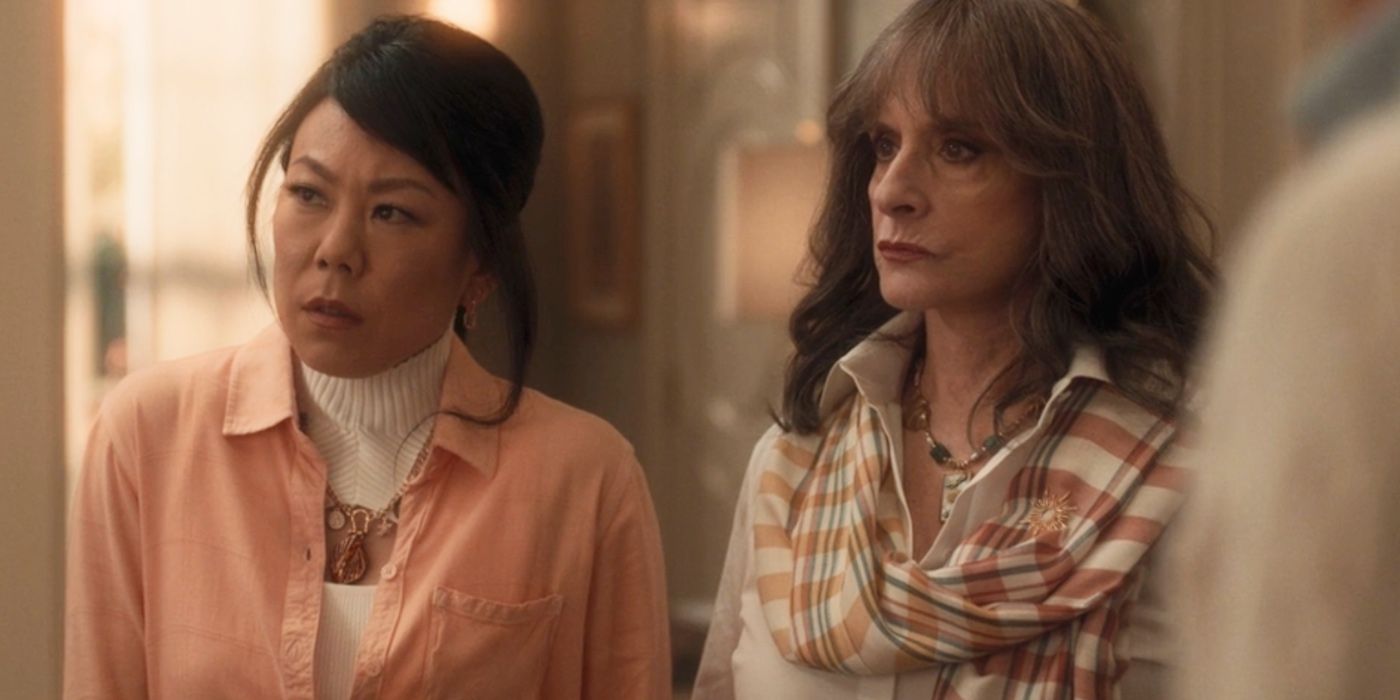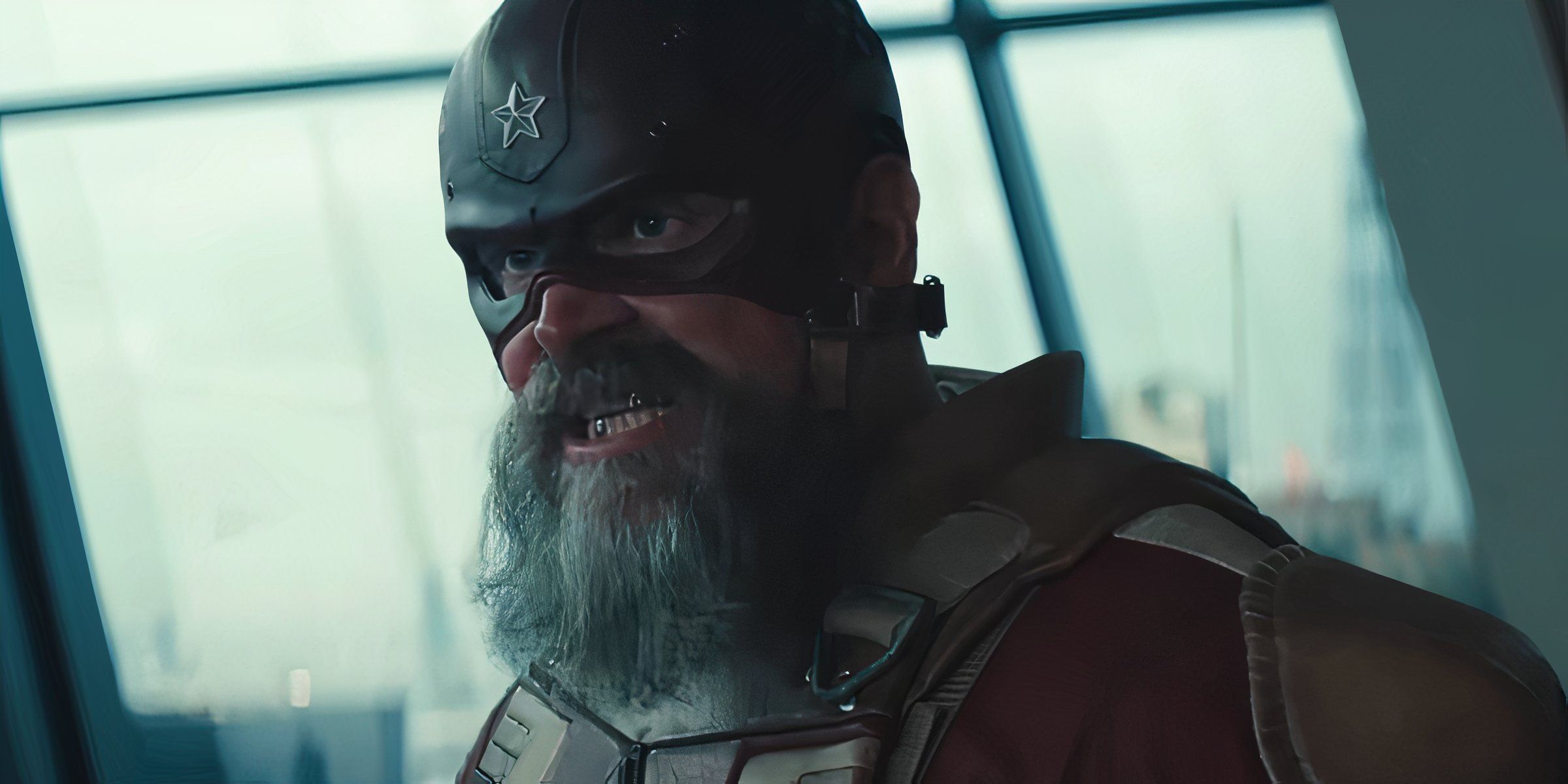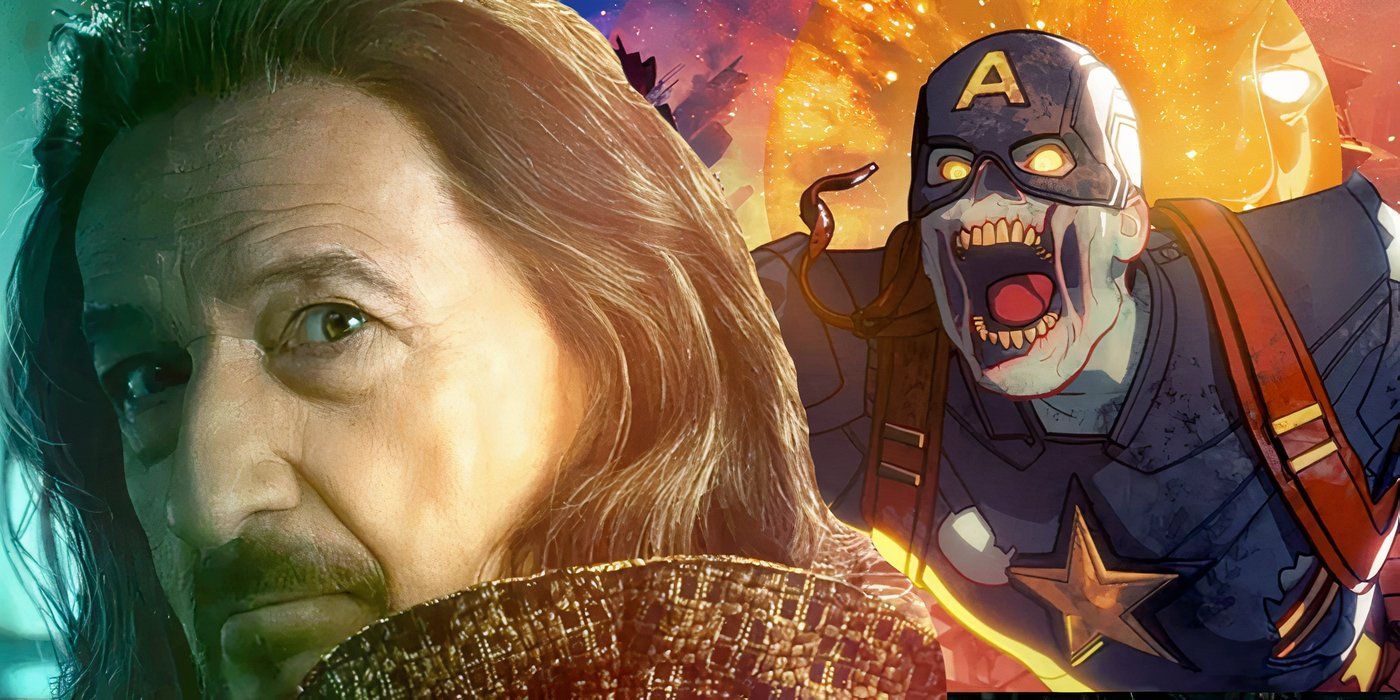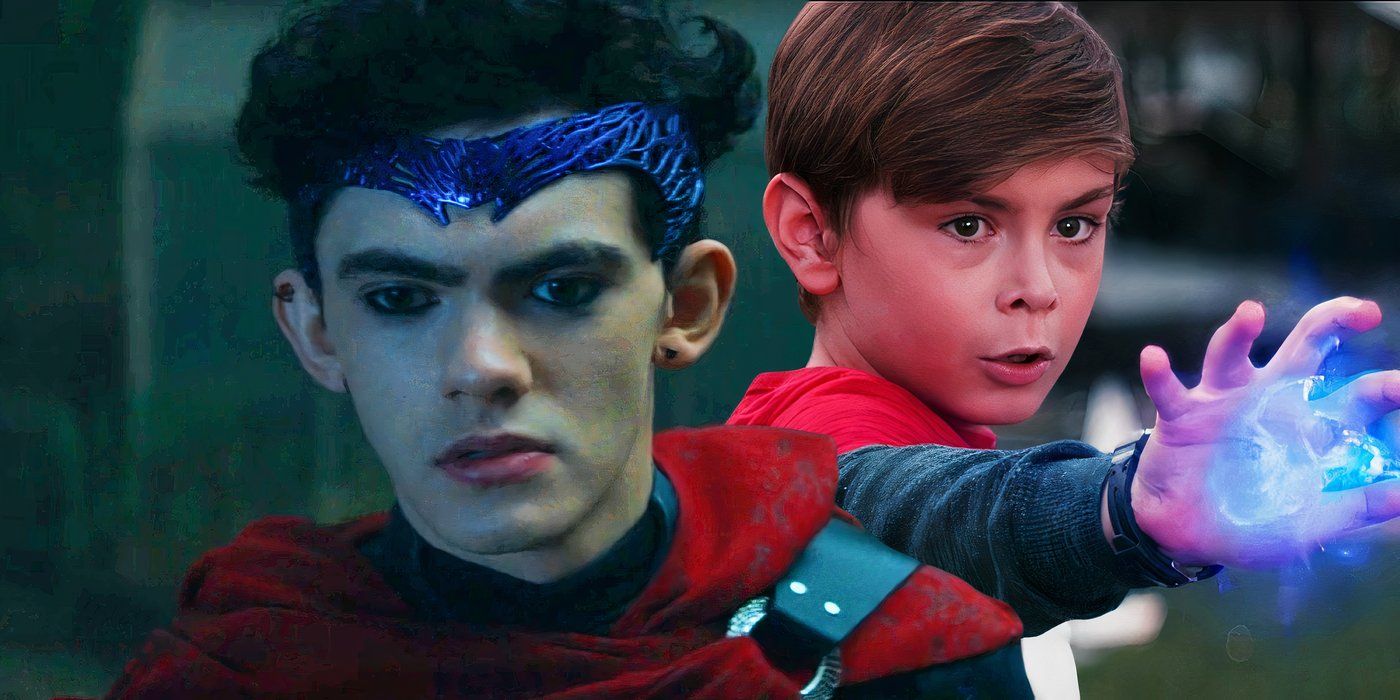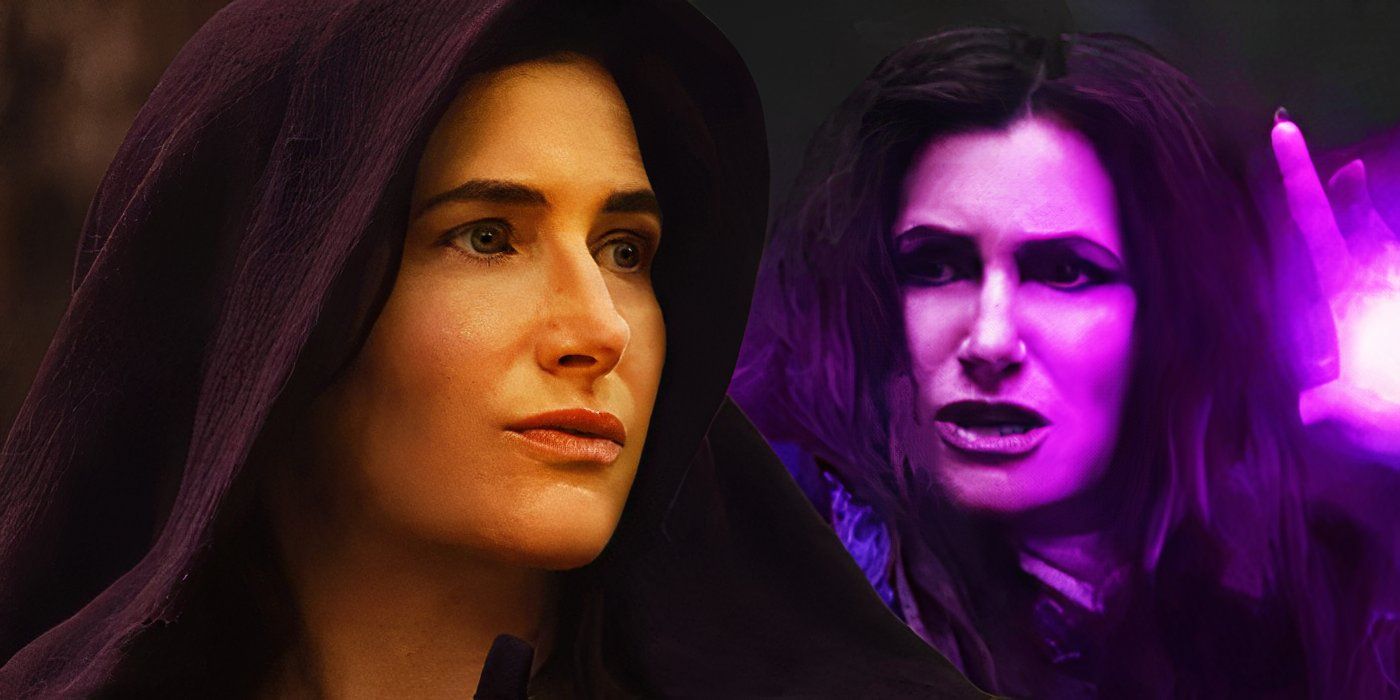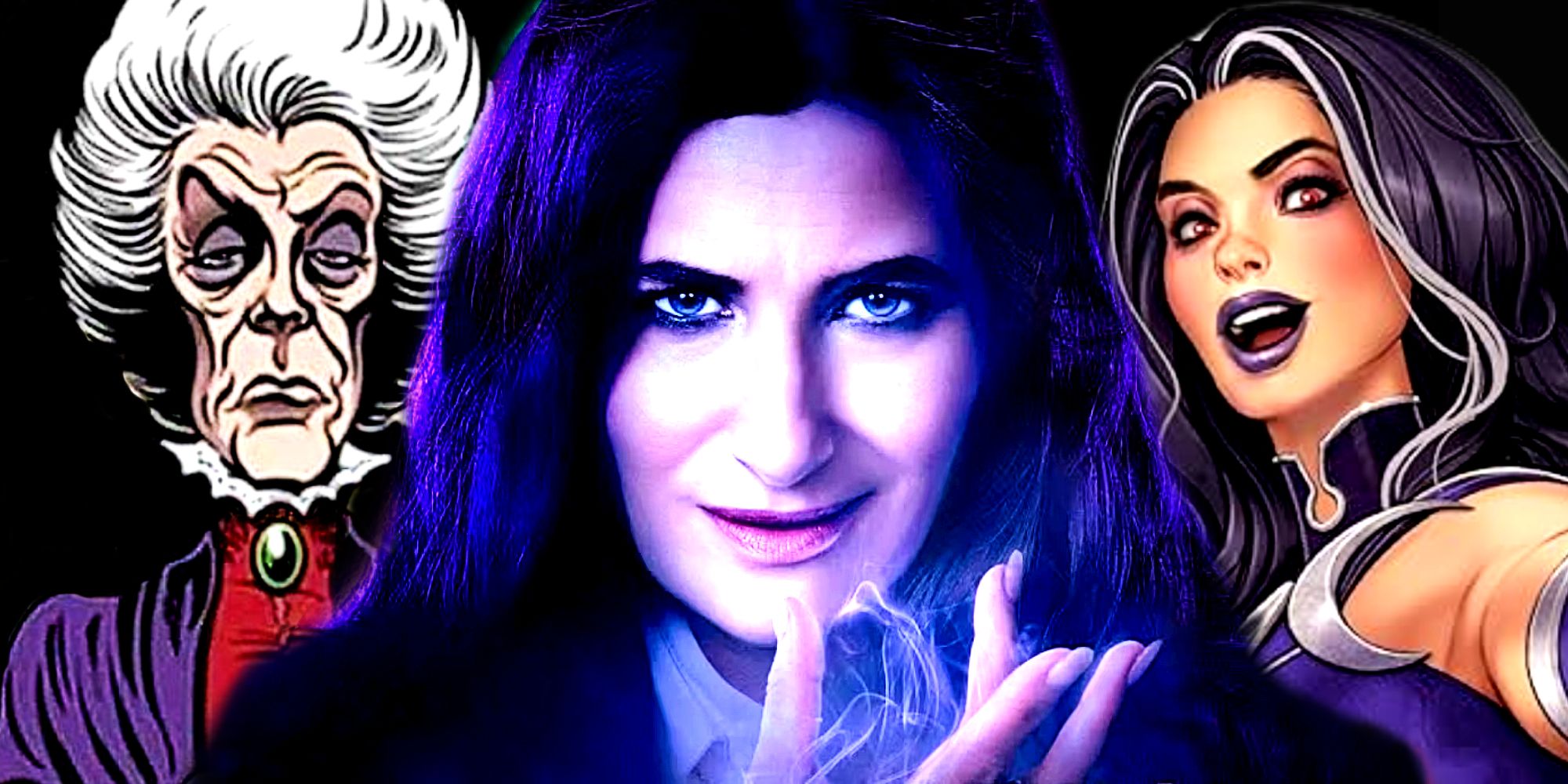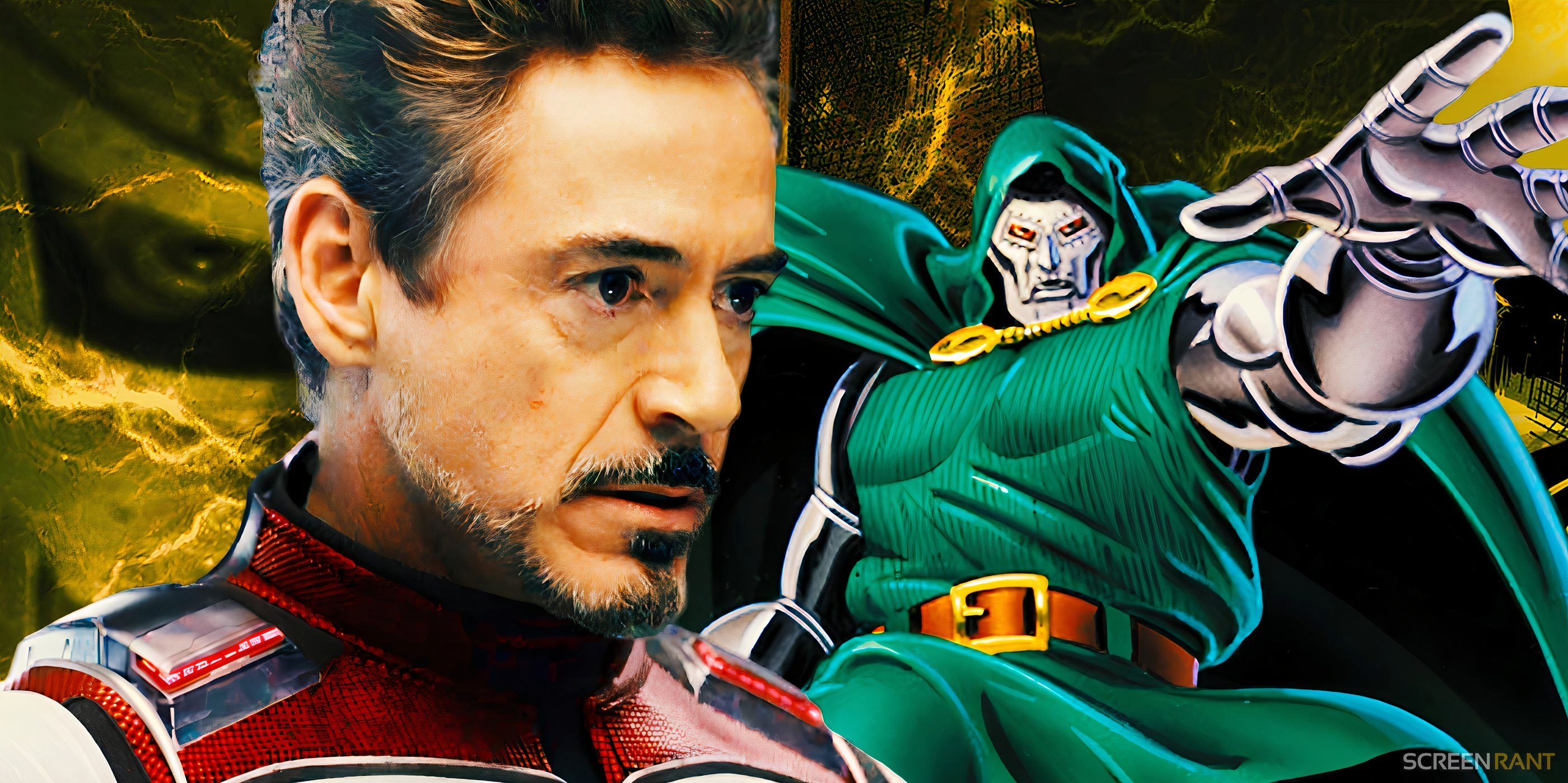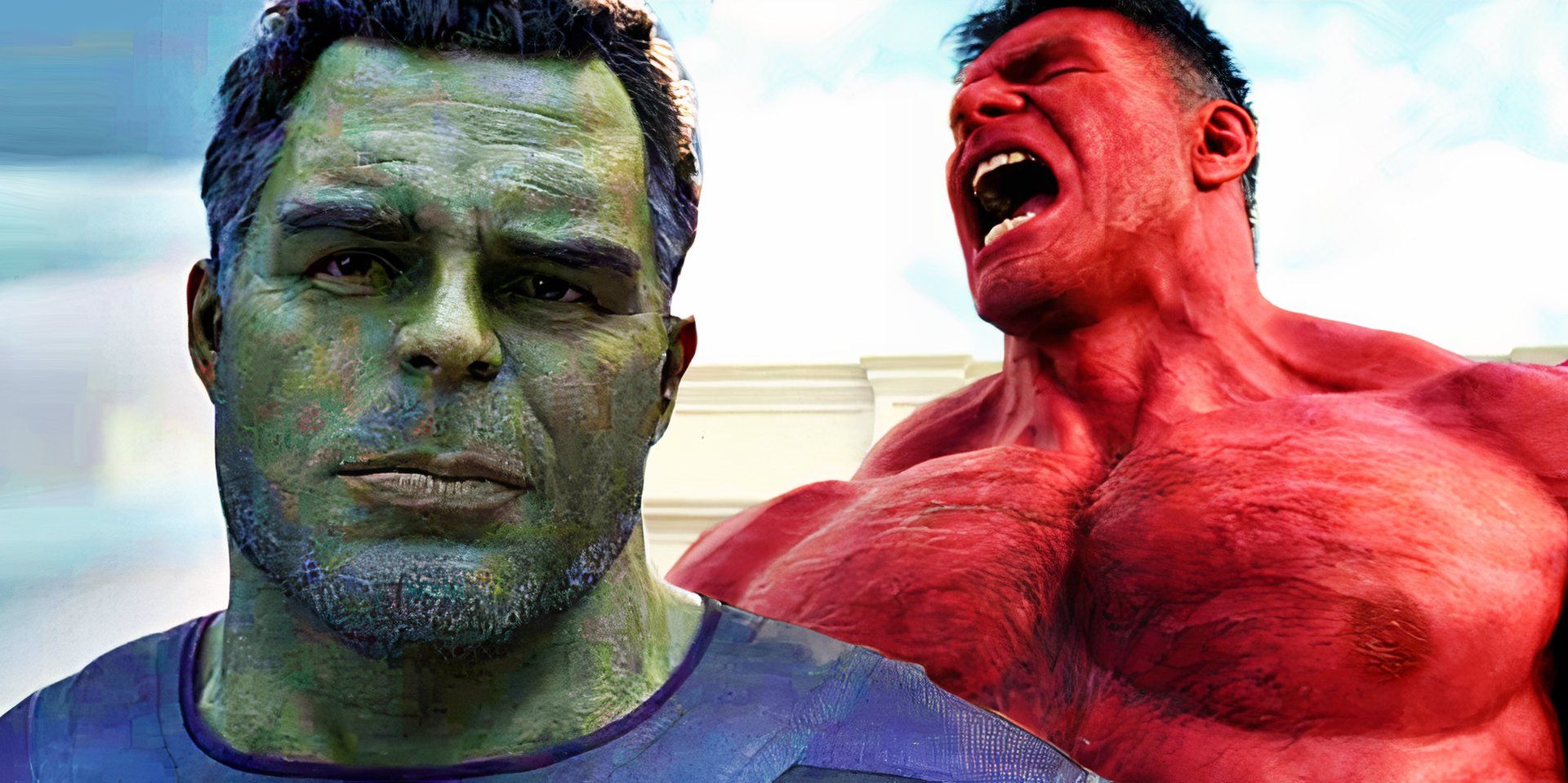10 Over-Looked Positives Of Rewatching Blade: Trinity 20 Years Later
Summary
Despite Blade: Trinity's underwhelming reception, there were talks of making a Blade 4 movie. However, these were eventually scrapped when Marvel regained the cinematic rights to the character and began producing a Blade movie in the Marvel Cinematic Universe. However, some aspects of Blade's least popular movie could prove difficult to top.
![]() Related What’s Going On With Marvel’s Blade Movie Though production on the film has been plagued with delays and crew changes, the MCU"s Blade reboot is still very much expected to go on.
Related What’s Going On With Marvel’s Blade Movie Though production on the film has been plagued with delays and crew changes, the MCU"s Blade reboot is still very much expected to go on.
10 Ryan Reynolds's Hannibal King Is A Precursor To Deadpool Ryan Reynolds Has Been Exploring Deadpool For Years Before Playing Him Close Rewatching Blade: Trinity, it is apparent that Ryan Reynolds' portrayal of Hannibal King in Blade: Trinity was a precursor to Deadpool. With his sharp wit and charismatic delivery, Reynolds injected a familiar dose of comedic energy into the vampire-hunting world. Hannibal King's snarky one-liners and self-aware banter demonstrated Reynolds' comedic prowess, laying the groundwork for the irreverent and fourth-wall-breaking style that defines Deadpool. Considering this, Reynold's Hannibal King is less incongruous with the narrative. Blade: Trinity offered a glimpse into the early stages of Reynolds honing the character traits that make Deadpool a beloved and unique Marvel hero.
9 Blade: Trinity's Amazing Opening Scene Each Blade Movie Has A Great Opening Scene![]() Blade: Trinity's thrilling opening scene blended intense combat and high-speed action. Wesley Snipes delivered an iconic entrance as Blade before engaging in a visceral battle against bloodthirsty vampires. The choreography is sharp, with Blade showcasing his unparalleled combat skills as he dispatches foes with his signature weaponry and panache.
Blade: Trinity's thrilling opening scene blended intense combat and high-speed action. Wesley Snipes delivered an iconic entrance as Blade before engaging in a visceral battle against bloodthirsty vampires. The choreography is sharp, with Blade showcasing his unparalleled combat skills as he dispatches foes with his signature weaponry and panache.
The scene intensified as the confrontation spilled into a gripping car chase as Blade dispatches his adversaries. The opening scene sets the tone for the movie, combining stylish visuals, energetic fight scenes, and Snipes' relentless charisma. It remains a captivating introduction to the movie and a thrilling spectacle even years later.
8 Parker Posey Plays A Superb Villain Parker Posey Played Danica Talos![]() Parker Posey's portrayal of Danica Talos in Blade: Trinity stood out as a compelling and memorable villain. Her performance brought a unique blend of charisma, cunning, and a touch of dark humor to the character. Talos, as a vampire leader, exudes a sinister charm that elevates her beyond a typical antagonist. Posey's ability to balance menace with a certain sophistication makes Danica a captivating foil to the Blade: Trinity heroes. Upon rewatching the movie, Posey's nuanced performance continues to shine, offering a delightful and enduring contribution to the movie's overall appeal.
Parker Posey's portrayal of Danica Talos in Blade: Trinity stood out as a compelling and memorable villain. Her performance brought a unique blend of charisma, cunning, and a touch of dark humor to the character. Talos, as a vampire leader, exudes a sinister charm that elevates her beyond a typical antagonist. Posey's ability to balance menace with a certain sophistication makes Danica a captivating foil to the Blade: Trinity heroes. Upon rewatching the movie, Posey's nuanced performance continues to shine, offering a delightful and enduring contribution to the movie's overall appeal.
7 Blade: Trinity Is The Funniest In The Trilogy Blade: Trinity Was Far More Lighthearted Than Previous Movies![]() Blade: Trinity distinguishes itself as the funniest installment in the Blade trilogy, injecting a generous dose of humor into the typically dark, horror-infused narrative. Ryan Reynolds' wisecracking Hannibal King brought a comedic dynamic, providing a humorous counterbalance to the intense action. Wesley Snipes offered more of his iconic one-liners in a more irreverent demeanor, building upon his smattering of jokes in the first two movies. The humor helped make Blade: Trinity a more lighthearted entrant into the franchise, adding a refreshing layer to the series. The comedic elements enhance the overall entertainment value, contributing to the movie's enduring appeal.
Blade: Trinity distinguishes itself as the funniest installment in the Blade trilogy, injecting a generous dose of humor into the typically dark, horror-infused narrative. Ryan Reynolds' wisecracking Hannibal King brought a comedic dynamic, providing a humorous counterbalance to the intense action. Wesley Snipes offered more of his iconic one-liners in a more irreverent demeanor, building upon his smattering of jokes in the first two movies. The humor helped make Blade: Trinity a more lighthearted entrant into the franchise, adding a refreshing layer to the series. The comedic elements enhance the overall entertainment value, contributing to the movie's enduring appeal.
6 Blade: Trinity References The Comic Book Origins Blade: Trinity Connects To Blade's First Comic Book Appearance![]() Blade: Trinity paid homage to its source material by incorporating Marvel's The Tomb of Dracula comic series. Hannibal hands Blade an issue of the comic book while explaining the movie's antagonist, Dracula. Blade made his Marvel debut in this series several issues earlier, in The Tomb of Dracula #10. This kind of connection between the cinematic narrative and the beloved Marvel source material is prominent in contemporary Marvel movies. Rewatching Blade: Trinity, this reference is especially pleasing. Blade also makes a passing swipe at Saturday morning cartoons, a reference to the era's popular animated shows depicting Marvel heroes.
Blade: Trinity paid homage to its source material by incorporating Marvel's The Tomb of Dracula comic series. Hannibal hands Blade an issue of the comic book while explaining the movie's antagonist, Dracula. Blade made his Marvel debut in this series several issues earlier, in The Tomb of Dracula #10. This kind of connection between the cinematic narrative and the beloved Marvel source material is prominent in contemporary Marvel movies. Rewatching Blade: Trinity, this reference is especially pleasing. Blade also makes a passing swipe at Saturday morning cartoons, a reference to the era's popular animated shows depicting Marvel heroes.
5 Knowing Blade Trinity's BTS Drama Makes The Movie More Impressive Blade: Trinity Was Rife With Production Issues![]() Being aware of Blade: Trinity's tumultuous production, particularly regarding tension on set and clashes between Snipes and director David Goyer, makes the movie's incredible fight scenes even more impressive. Wesley Snipes reportedly used a stand-in for many scenes, and even refused to cooperate at times - leading to Snipes' infamous CGI eyes in Blade: Trinity's alternative final scene. However, despite this, Blade: Trinity still delivered intense and well-choreographed action seamlessly. Knowing the off-screen drama only makes the final product even more impressive, highlighting the resilience and professionalism that went into creating a visually striking and cohesive movie despite its complications.
Being aware of Blade: Trinity's tumultuous production, particularly regarding tension on set and clashes between Snipes and director David Goyer, makes the movie's incredible fight scenes even more impressive. Wesley Snipes reportedly used a stand-in for many scenes, and even refused to cooperate at times - leading to Snipes' infamous CGI eyes in Blade: Trinity's alternative final scene. However, despite this, Blade: Trinity still delivered intense and well-choreographed action seamlessly. Knowing the off-screen drama only makes the final product even more impressive, highlighting the resilience and professionalism that went into creating a visually striking and cohesive movie despite its complications.
![]() Related Blade: Trinity's Alternate Ending Would Have Fixed Its Biggest Mistake While still a poor coda to the otherwise vaunted Blade trilogy, Blade: Trinity"s alternate ending would have nevertheless fixed its biggest mistake.
Related Blade: Trinity's Alternate Ending Would Have Fixed Its Biggest Mistake While still a poor coda to the otherwise vaunted Blade trilogy, Blade: Trinity"s alternate ending would have nevertheless fixed its biggest mistake.
4 Blade: Trinity Expanded The Vampire Lore Blade: Trinity Introduced New Characters From Marvel's Vampire Comics Close Blade: Trinity enriched the vampire lore by expanding the narrative, which, upon rewatching, becomes a valuable feature. The movie introduced several characters from the comics and delved further into details surrounding vampire-human relations. Blade: Trinity also delved into the hierarchy and politics of the vampire world, providing a broader understanding of the supernatural universe. By incorporating classic elements, the movie enhanced the lore and created a more immersive experience for viewers familiar with Marvel's Blade mythology. This expansion contributes to Blade: Trinity's enduring appeal, offering a fresh perspective on the intricacies of the vampire realm depicted previously.
3 The Fight Scenes Are Thrilling The Blade Trilogy Is Famed For Its Incredible Fight Scenes Close The fight sequences in Blade: Trinity remains a notable highlight. The choreography, blending martial arts with stylish weaponry, showcases Blade's unparalleled combat skills and the movie's commitment to delivering visceral action. Each fight scene is a kinetic symphony, with Wesley Snipes portraying the vampire hunter with unmatched intensity. From hand-to-hand combat to the use of Blade's signature weapons, the sequences are visually striking and well-executed. The precision and energy are major features in the Blade franchise, with Blade: Trinity offering a litany of thrilling fights that remain an undeniable highlight in the overlooked movie.
2 Blade: Trinity Depicted Blade's Main Foe Dracula Is Blade's Primary Villain In The Comics![]() While the delivery has been contested, Blade: Trinity deserves praise for depicting Blade's iconic arch-nemesis, Dracula. In Marvel Comics, Dracula frequently clashes with the Daywalker through his intimate connection with the vampire world. He is known for his power, charisma, and strategic cunning, which are reasonably well conveyed in the movie. While Dracula is considered the worst part of Blade: Trinity, adapting the famed villain was a good decision. Dracula is a central facet of Blade's comic book narrative, so his inclusion in Blade: Trinity deserves some praise.
While the delivery has been contested, Blade: Trinity deserves praise for depicting Blade's iconic arch-nemesis, Dracula. In Marvel Comics, Dracula frequently clashes with the Daywalker through his intimate connection with the vampire world. He is known for his power, charisma, and strategic cunning, which are reasonably well conveyed in the movie. While Dracula is considered the worst part of Blade: Trinity, adapting the famed villain was a good decision. Dracula is a central facet of Blade's comic book narrative, so his inclusion in Blade: Trinity deserves some praise.
1 Wesley Snipes Is As Iconic As Ever Wesley Snipes Is Considered The Quintessential Blade![]() Wesley Snipes' performance in Blade: Trinity continued his iconic embodiment of the Daywalker, and is arguably the most enjoyable element when viewed subsequently. Snipes effortlessly embodied the brooding intensity and Stoic charisma that define the character of Blade. His martial arts prowess and commanding presence add a timeless quality to the movie, making each of his scenes utterly captivating. Snipes' performance cements his portrayal as the franchise's strongest aspect, whether engaging in intense fight sequences or delivering witty quips. Snipes' Blade remains an enduring and iconic presence, and is the major positive in rewatching Blade: Trinity decades later.
Wesley Snipes' performance in Blade: Trinity continued his iconic embodiment of the Daywalker, and is arguably the most enjoyable element when viewed subsequently. Snipes effortlessly embodied the brooding intensity and Stoic charisma that define the character of Blade. His martial arts prowess and commanding presence add a timeless quality to the movie, making each of his scenes utterly captivating. Snipes' performance cements his portrayal as the franchise's strongest aspect, whether engaging in intense fight sequences or delivering witty quips. Snipes' Blade remains an enduring and iconic presence, and is the major positive in rewatching Blade: Trinity decades later.
![]() Blade: Trinity In Blade: Trinity, Wesley Snipes' Daywalker returns one final time to fight Dracula himself. This time, Eric Brooks is accompanied by his friend Whistler's daughter Abigail (Jessica Biel) and the former vampire Hannibal King (Ryan Reynolds), who work together as the vampire-hunting team "The Daystalkers" to stop Danica Talos (Parker Posey) and end the war between humans and vampires once and for all.
Blade: Trinity In Blade: Trinity, Wesley Snipes' Daywalker returns one final time to fight Dracula himself. This time, Eric Brooks is accompanied by his friend Whistler's daughter Abigail (Jessica Biel) and the former vampire Hannibal King (Ryan Reynolds), who work together as the vampire-hunting team "The Daystalkers" to stop Danica Talos (Parker Posey) and end the war between humans and vampires once and for all.
Release Date December 8, 2004 Director David S. Goyer Cast Wesley Snipes , Kris Kristofferson , Dominic Purcell , Jessica Biel , Ryan Reynolds , Parker Posey Runtime 123minutes
[圖擷取自網路,如有疑問請私訊]
- Ryan Reynolds' portrayal of Hannibal King in Blade: Trinity laid the groundwork for his iconic role as Deadpool, showcasing his comedic prowess and snarky one-liners.
- Blade: Trinity's opening scene, with Wesley Snipes' iconic entrance and intense combat, sets the tone for the movie and remains a captivating and thrilling spectacle even years later.
- Parker Posey's portrayal of Danica Talos in Blade: Trinity stands out as a compelling and memorable villain, bringing a unique blend of charisma, cunning, and dark humor to the character.
Despite Blade: Trinity's underwhelming reception, there were talks of making a Blade 4 movie. However, these were eventually scrapped when Marvel regained the cinematic rights to the character and began producing a Blade movie in the Marvel Cinematic Universe. However, some aspects of Blade's least popular movie could prove difficult to top.
 Related What’s Going On With Marvel’s Blade Movie Though production on the film has been plagued with delays and crew changes, the MCU"s Blade reboot is still very much expected to go on.
Related What’s Going On With Marvel’s Blade Movie Though production on the film has been plagued with delays and crew changes, the MCU"s Blade reboot is still very much expected to go on. 10 Ryan Reynolds's Hannibal King Is A Precursor To Deadpool Ryan Reynolds Has Been Exploring Deadpool For Years Before Playing Him Close Rewatching Blade: Trinity, it is apparent that Ryan Reynolds' portrayal of Hannibal King in Blade: Trinity was a precursor to Deadpool. With his sharp wit and charismatic delivery, Reynolds injected a familiar dose of comedic energy into the vampire-hunting world. Hannibal King's snarky one-liners and self-aware banter demonstrated Reynolds' comedic prowess, laying the groundwork for the irreverent and fourth-wall-breaking style that defines Deadpool. Considering this, Reynold's Hannibal King is less incongruous with the narrative. Blade: Trinity offered a glimpse into the early stages of Reynolds honing the character traits that make Deadpool a beloved and unique Marvel hero.
9 Blade: Trinity's Amazing Opening Scene Each Blade Movie Has A Great Opening Scene
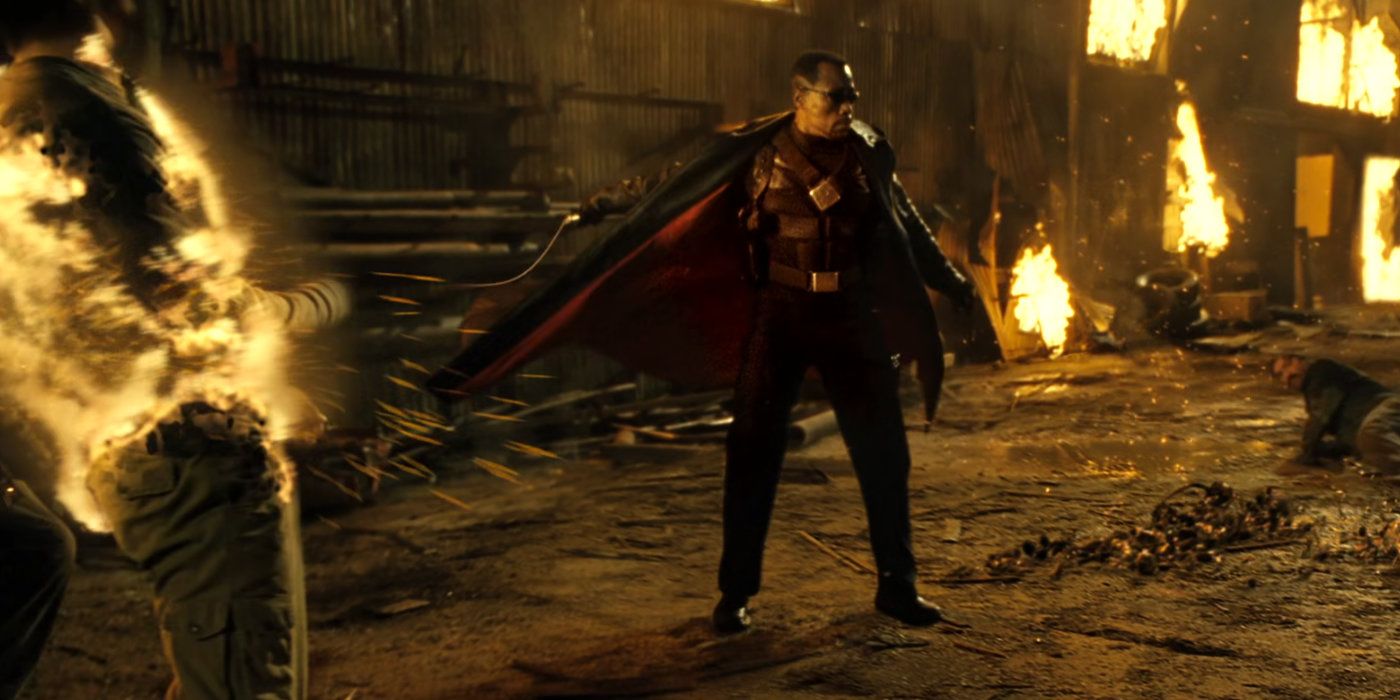 Blade: Trinity's thrilling opening scene blended intense combat and high-speed action. Wesley Snipes delivered an iconic entrance as Blade before engaging in a visceral battle against bloodthirsty vampires. The choreography is sharp, with Blade showcasing his unparalleled combat skills as he dispatches foes with his signature weaponry and panache.
Blade: Trinity's thrilling opening scene blended intense combat and high-speed action. Wesley Snipes delivered an iconic entrance as Blade before engaging in a visceral battle against bloodthirsty vampires. The choreography is sharp, with Blade showcasing his unparalleled combat skills as he dispatches foes with his signature weaponry and panache. The scene intensified as the confrontation spilled into a gripping car chase as Blade dispatches his adversaries. The opening scene sets the tone for the movie, combining stylish visuals, energetic fight scenes, and Snipes' relentless charisma. It remains a captivating introduction to the movie and a thrilling spectacle even years later.
8 Parker Posey Plays A Superb Villain Parker Posey Played Danica Talos
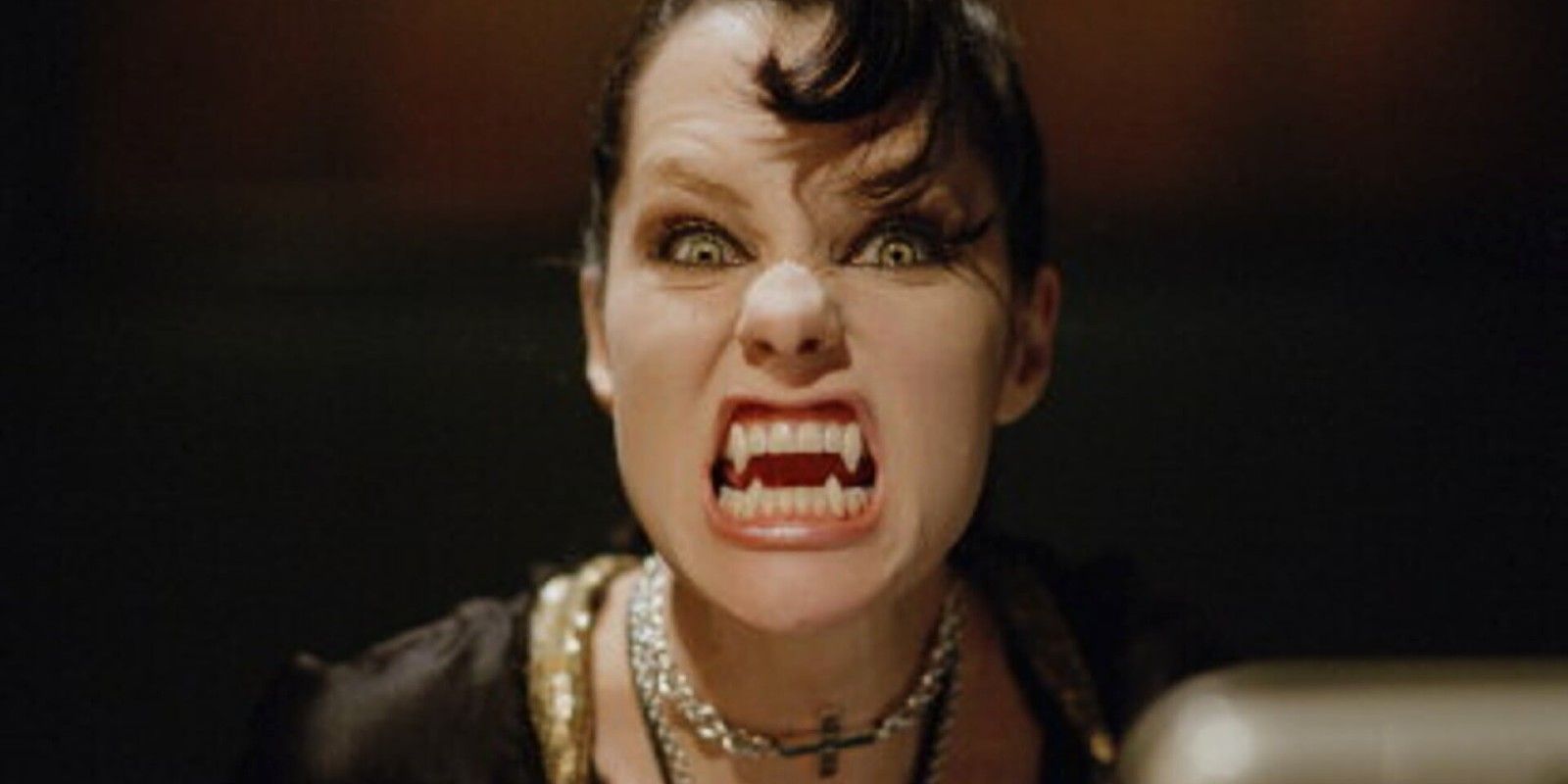 Parker Posey's portrayal of Danica Talos in Blade: Trinity stood out as a compelling and memorable villain. Her performance brought a unique blend of charisma, cunning, and a touch of dark humor to the character. Talos, as a vampire leader, exudes a sinister charm that elevates her beyond a typical antagonist. Posey's ability to balance menace with a certain sophistication makes Danica a captivating foil to the Blade: Trinity heroes. Upon rewatching the movie, Posey's nuanced performance continues to shine, offering a delightful and enduring contribution to the movie's overall appeal.
Parker Posey's portrayal of Danica Talos in Blade: Trinity stood out as a compelling and memorable villain. Her performance brought a unique blend of charisma, cunning, and a touch of dark humor to the character. Talos, as a vampire leader, exudes a sinister charm that elevates her beyond a typical antagonist. Posey's ability to balance menace with a certain sophistication makes Danica a captivating foil to the Blade: Trinity heroes. Upon rewatching the movie, Posey's nuanced performance continues to shine, offering a delightful and enduring contribution to the movie's overall appeal. 7 Blade: Trinity Is The Funniest In The Trilogy Blade: Trinity Was Far More Lighthearted Than Previous Movies
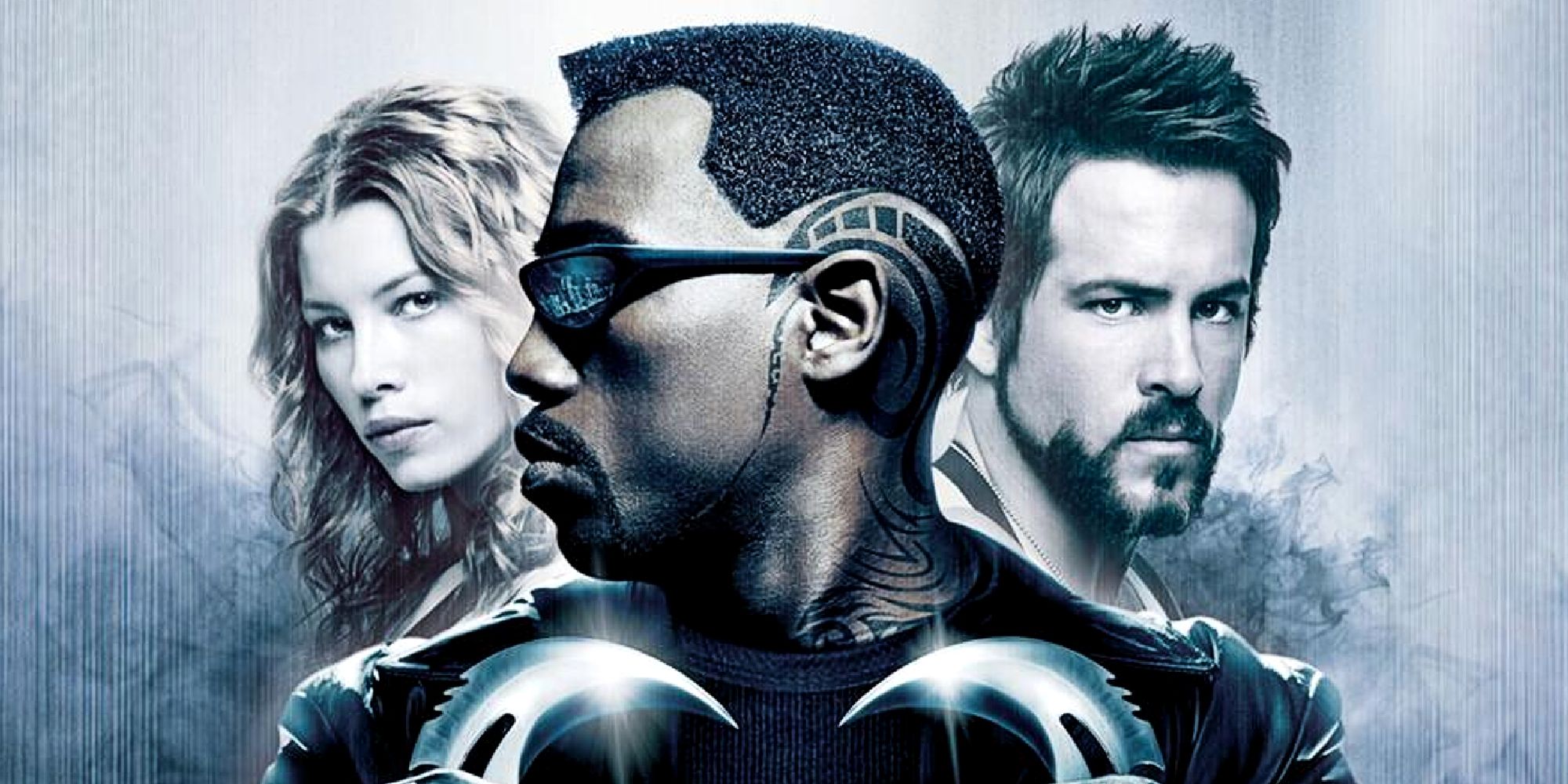 Blade: Trinity distinguishes itself as the funniest installment in the Blade trilogy, injecting a generous dose of humor into the typically dark, horror-infused narrative. Ryan Reynolds' wisecracking Hannibal King brought a comedic dynamic, providing a humorous counterbalance to the intense action. Wesley Snipes offered more of his iconic one-liners in a more irreverent demeanor, building upon his smattering of jokes in the first two movies. The humor helped make Blade: Trinity a more lighthearted entrant into the franchise, adding a refreshing layer to the series. The comedic elements enhance the overall entertainment value, contributing to the movie's enduring appeal.
Blade: Trinity distinguishes itself as the funniest installment in the Blade trilogy, injecting a generous dose of humor into the typically dark, horror-infused narrative. Ryan Reynolds' wisecracking Hannibal King brought a comedic dynamic, providing a humorous counterbalance to the intense action. Wesley Snipes offered more of his iconic one-liners in a more irreverent demeanor, building upon his smattering of jokes in the first two movies. The humor helped make Blade: Trinity a more lighthearted entrant into the franchise, adding a refreshing layer to the series. The comedic elements enhance the overall entertainment value, contributing to the movie's enduring appeal. 6 Blade: Trinity References The Comic Book Origins Blade: Trinity Connects To Blade's First Comic Book Appearance
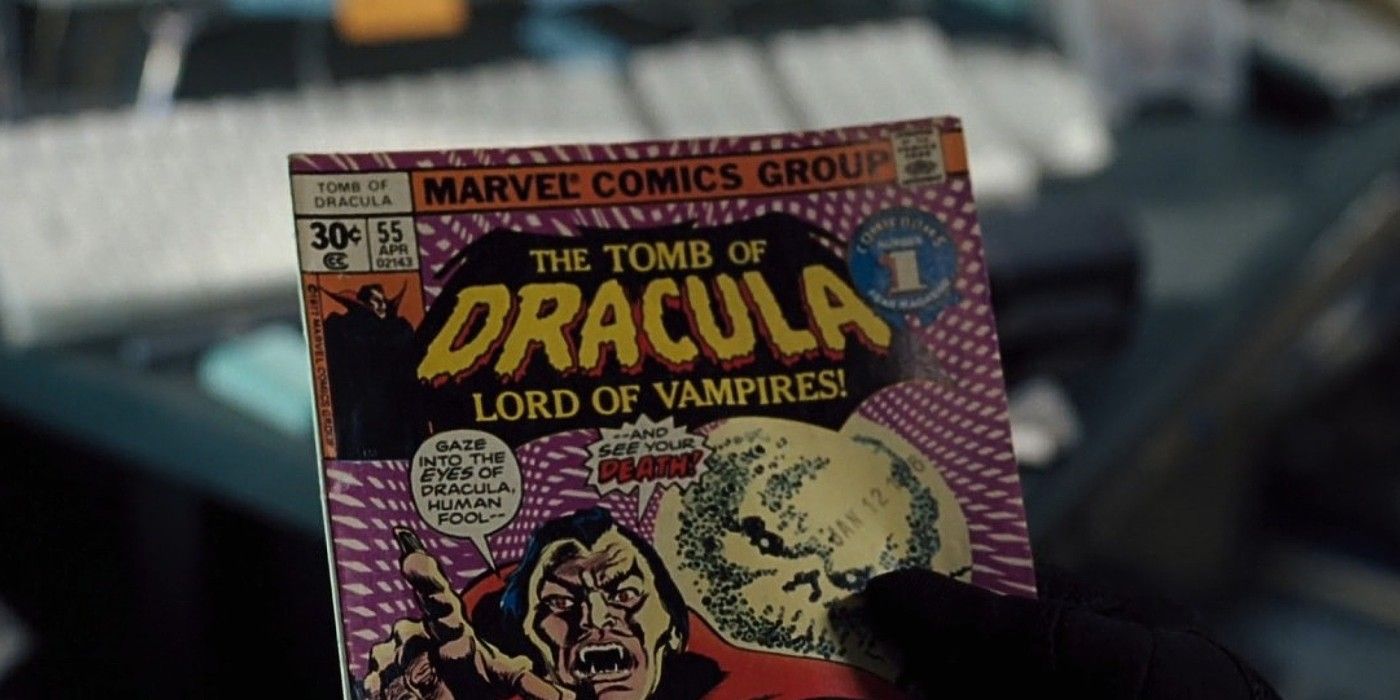 Blade: Trinity paid homage to its source material by incorporating Marvel's The Tomb of Dracula comic series. Hannibal hands Blade an issue of the comic book while explaining the movie's antagonist, Dracula. Blade made his Marvel debut in this series several issues earlier, in The Tomb of Dracula #10. This kind of connection between the cinematic narrative and the beloved Marvel source material is prominent in contemporary Marvel movies. Rewatching Blade: Trinity, this reference is especially pleasing. Blade also makes a passing swipe at Saturday morning cartoons, a reference to the era's popular animated shows depicting Marvel heroes.
Blade: Trinity paid homage to its source material by incorporating Marvel's The Tomb of Dracula comic series. Hannibal hands Blade an issue of the comic book while explaining the movie's antagonist, Dracula. Blade made his Marvel debut in this series several issues earlier, in The Tomb of Dracula #10. This kind of connection between the cinematic narrative and the beloved Marvel source material is prominent in contemporary Marvel movies. Rewatching Blade: Trinity, this reference is especially pleasing. Blade also makes a passing swipe at Saturday morning cartoons, a reference to the era's popular animated shows depicting Marvel heroes. 5 Knowing Blade Trinity's BTS Drama Makes The Movie More Impressive Blade: Trinity Was Rife With Production Issues
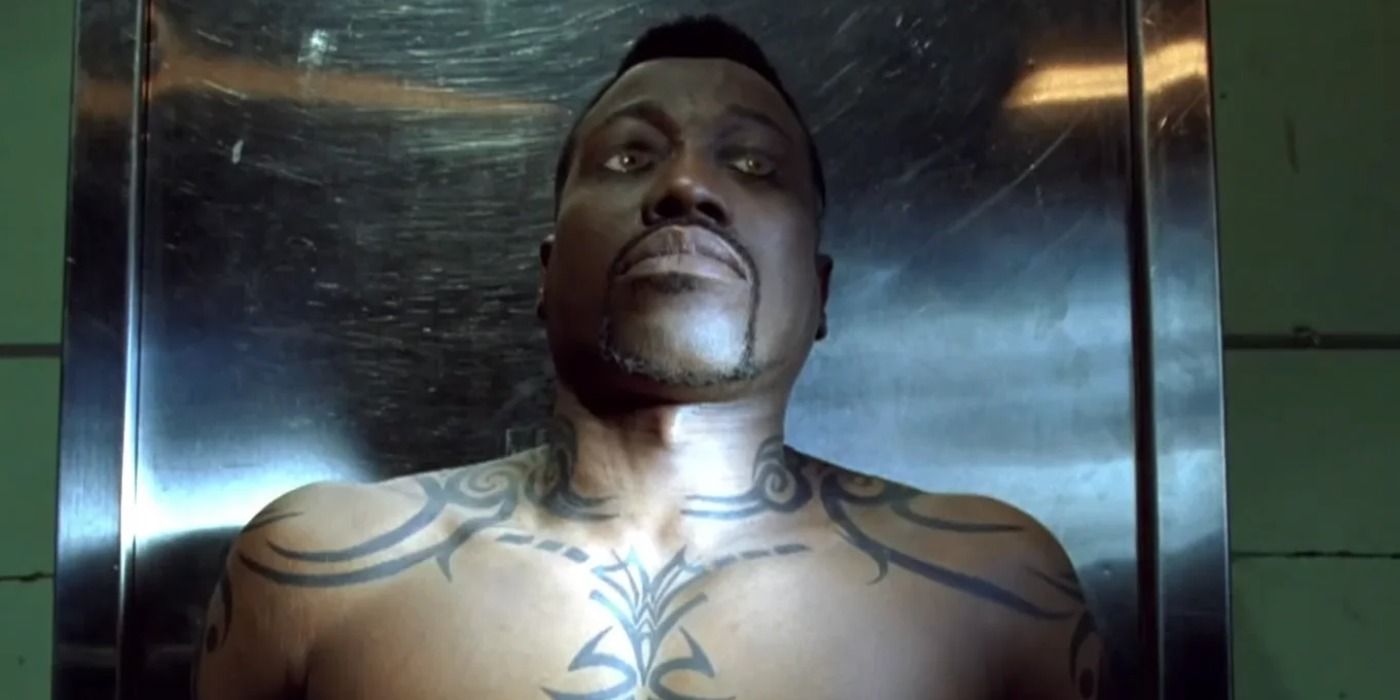 Being aware of Blade: Trinity's tumultuous production, particularly regarding tension on set and clashes between Snipes and director David Goyer, makes the movie's incredible fight scenes even more impressive. Wesley Snipes reportedly used a stand-in for many scenes, and even refused to cooperate at times - leading to Snipes' infamous CGI eyes in Blade: Trinity's alternative final scene. However, despite this, Blade: Trinity still delivered intense and well-choreographed action seamlessly. Knowing the off-screen drama only makes the final product even more impressive, highlighting the resilience and professionalism that went into creating a visually striking and cohesive movie despite its complications.
Being aware of Blade: Trinity's tumultuous production, particularly regarding tension on set and clashes between Snipes and director David Goyer, makes the movie's incredible fight scenes even more impressive. Wesley Snipes reportedly used a stand-in for many scenes, and even refused to cooperate at times - leading to Snipes' infamous CGI eyes in Blade: Trinity's alternative final scene. However, despite this, Blade: Trinity still delivered intense and well-choreographed action seamlessly. Knowing the off-screen drama only makes the final product even more impressive, highlighting the resilience and professionalism that went into creating a visually striking and cohesive movie despite its complications. 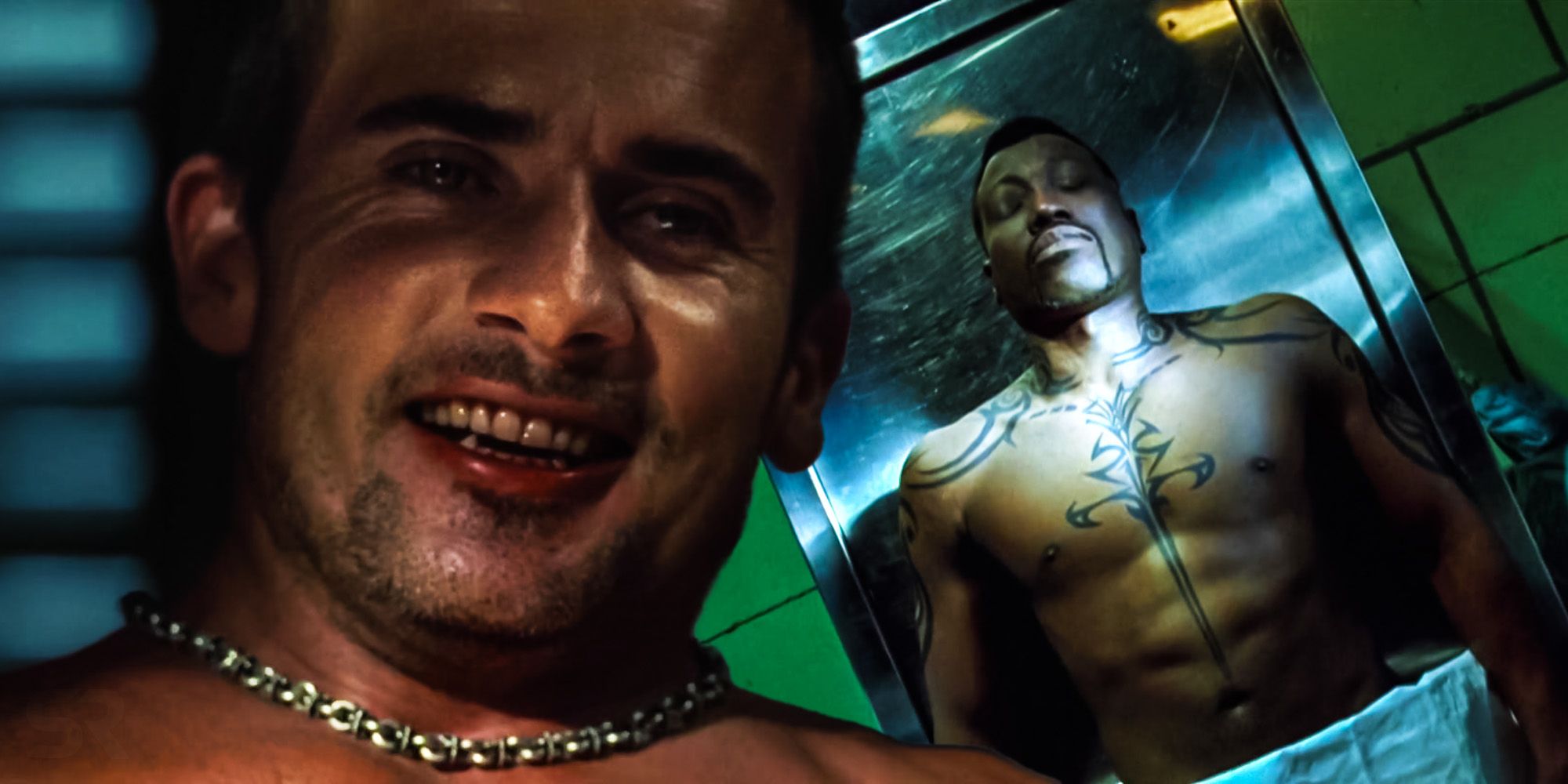 Related Blade: Trinity's Alternate Ending Would Have Fixed Its Biggest Mistake While still a poor coda to the otherwise vaunted Blade trilogy, Blade: Trinity"s alternate ending would have nevertheless fixed its biggest mistake.
Related Blade: Trinity's Alternate Ending Would Have Fixed Its Biggest Mistake While still a poor coda to the otherwise vaunted Blade trilogy, Blade: Trinity"s alternate ending would have nevertheless fixed its biggest mistake.4 Blade: Trinity Expanded The Vampire Lore Blade: Trinity Introduced New Characters From Marvel's Vampire Comics Close Blade: Trinity enriched the vampire lore by expanding the narrative, which, upon rewatching, becomes a valuable feature. The movie introduced several characters from the comics and delved further into details surrounding vampire-human relations. Blade: Trinity also delved into the hierarchy and politics of the vampire world, providing a broader understanding of the supernatural universe. By incorporating classic elements, the movie enhanced the lore and created a more immersive experience for viewers familiar with Marvel's Blade mythology. This expansion contributes to Blade: Trinity's enduring appeal, offering a fresh perspective on the intricacies of the vampire realm depicted previously.
3 The Fight Scenes Are Thrilling The Blade Trilogy Is Famed For Its Incredible Fight Scenes Close The fight sequences in Blade: Trinity remains a notable highlight. The choreography, blending martial arts with stylish weaponry, showcases Blade's unparalleled combat skills and the movie's commitment to delivering visceral action. Each fight scene is a kinetic symphony, with Wesley Snipes portraying the vampire hunter with unmatched intensity. From hand-to-hand combat to the use of Blade's signature weapons, the sequences are visually striking and well-executed. The precision and energy are major features in the Blade franchise, with Blade: Trinity offering a litany of thrilling fights that remain an undeniable highlight in the overlooked movie.
2 Blade: Trinity Depicted Blade's Main Foe Dracula Is Blade's Primary Villain In The Comics
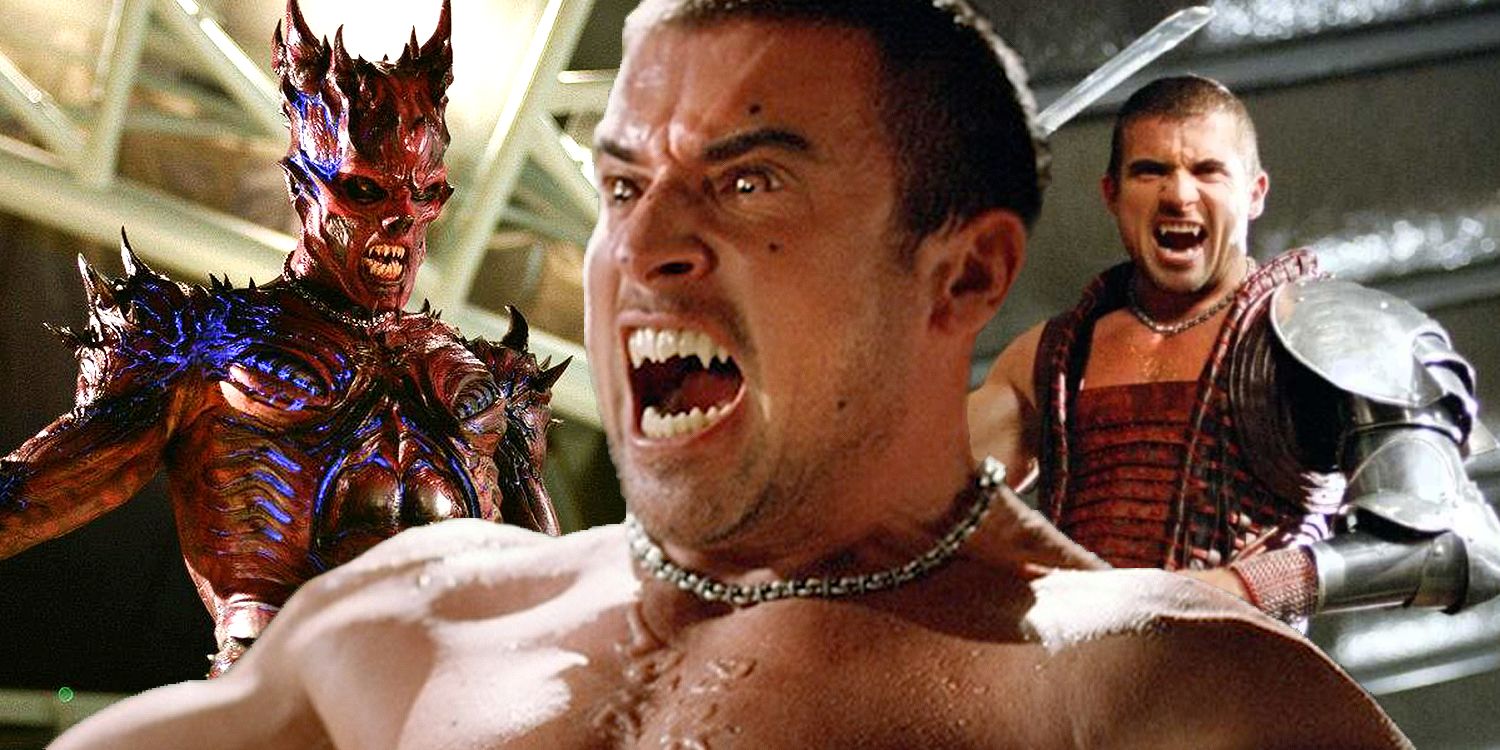 While the delivery has been contested, Blade: Trinity deserves praise for depicting Blade's iconic arch-nemesis, Dracula. In Marvel Comics, Dracula frequently clashes with the Daywalker through his intimate connection with the vampire world. He is known for his power, charisma, and strategic cunning, which are reasonably well conveyed in the movie. While Dracula is considered the worst part of Blade: Trinity, adapting the famed villain was a good decision. Dracula is a central facet of Blade's comic book narrative, so his inclusion in Blade: Trinity deserves some praise.
While the delivery has been contested, Blade: Trinity deserves praise for depicting Blade's iconic arch-nemesis, Dracula. In Marvel Comics, Dracula frequently clashes with the Daywalker through his intimate connection with the vampire world. He is known for his power, charisma, and strategic cunning, which are reasonably well conveyed in the movie. While Dracula is considered the worst part of Blade: Trinity, adapting the famed villain was a good decision. Dracula is a central facet of Blade's comic book narrative, so his inclusion in Blade: Trinity deserves some praise. 1 Wesley Snipes Is As Iconic As Ever Wesley Snipes Is Considered The Quintessential Blade
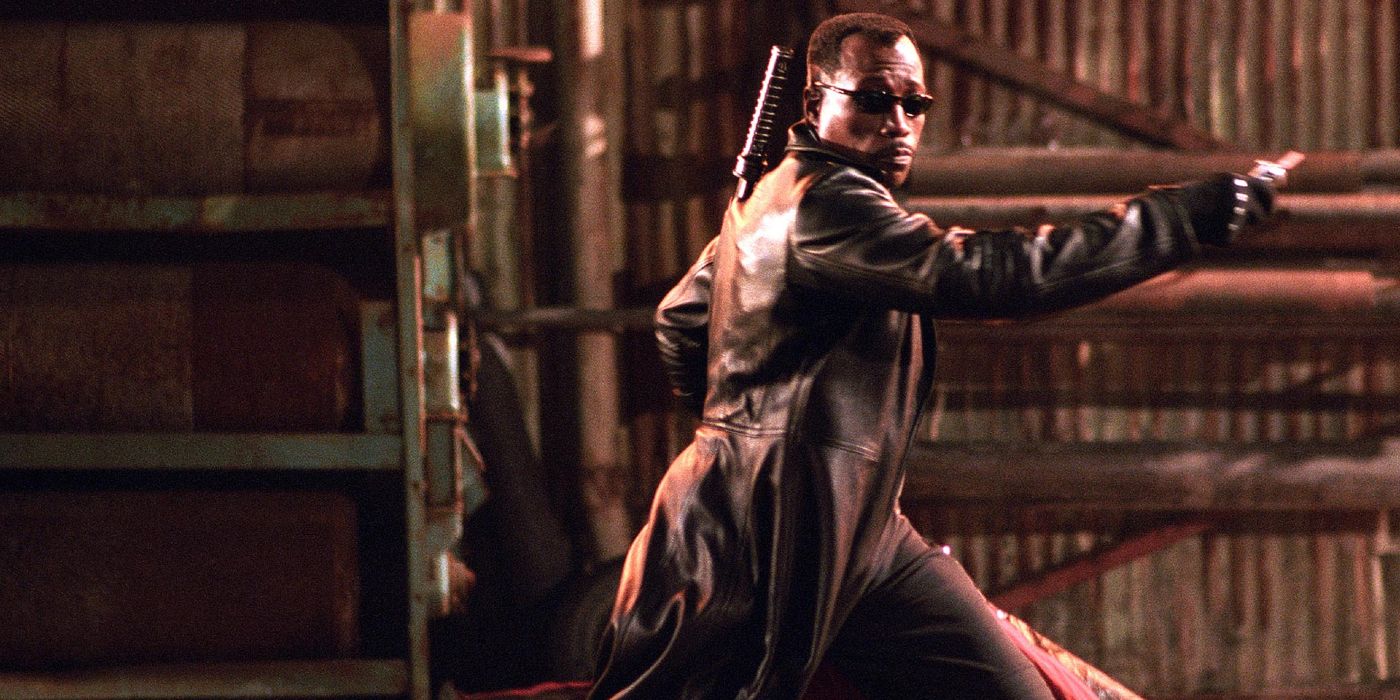 Wesley Snipes' performance in Blade: Trinity continued his iconic embodiment of the Daywalker, and is arguably the most enjoyable element when viewed subsequently. Snipes effortlessly embodied the brooding intensity and Stoic charisma that define the character of Blade. His martial arts prowess and commanding presence add a timeless quality to the movie, making each of his scenes utterly captivating. Snipes' performance cements his portrayal as the franchise's strongest aspect, whether engaging in intense fight sequences or delivering witty quips. Snipes' Blade remains an enduring and iconic presence, and is the major positive in rewatching Blade: Trinity decades later.
Wesley Snipes' performance in Blade: Trinity continued his iconic embodiment of the Daywalker, and is arguably the most enjoyable element when viewed subsequently. Snipes effortlessly embodied the brooding intensity and Stoic charisma that define the character of Blade. His martial arts prowess and commanding presence add a timeless quality to the movie, making each of his scenes utterly captivating. Snipes' performance cements his portrayal as the franchise's strongest aspect, whether engaging in intense fight sequences or delivering witty quips. Snipes' Blade remains an enduring and iconic presence, and is the major positive in rewatching Blade: Trinity decades later. 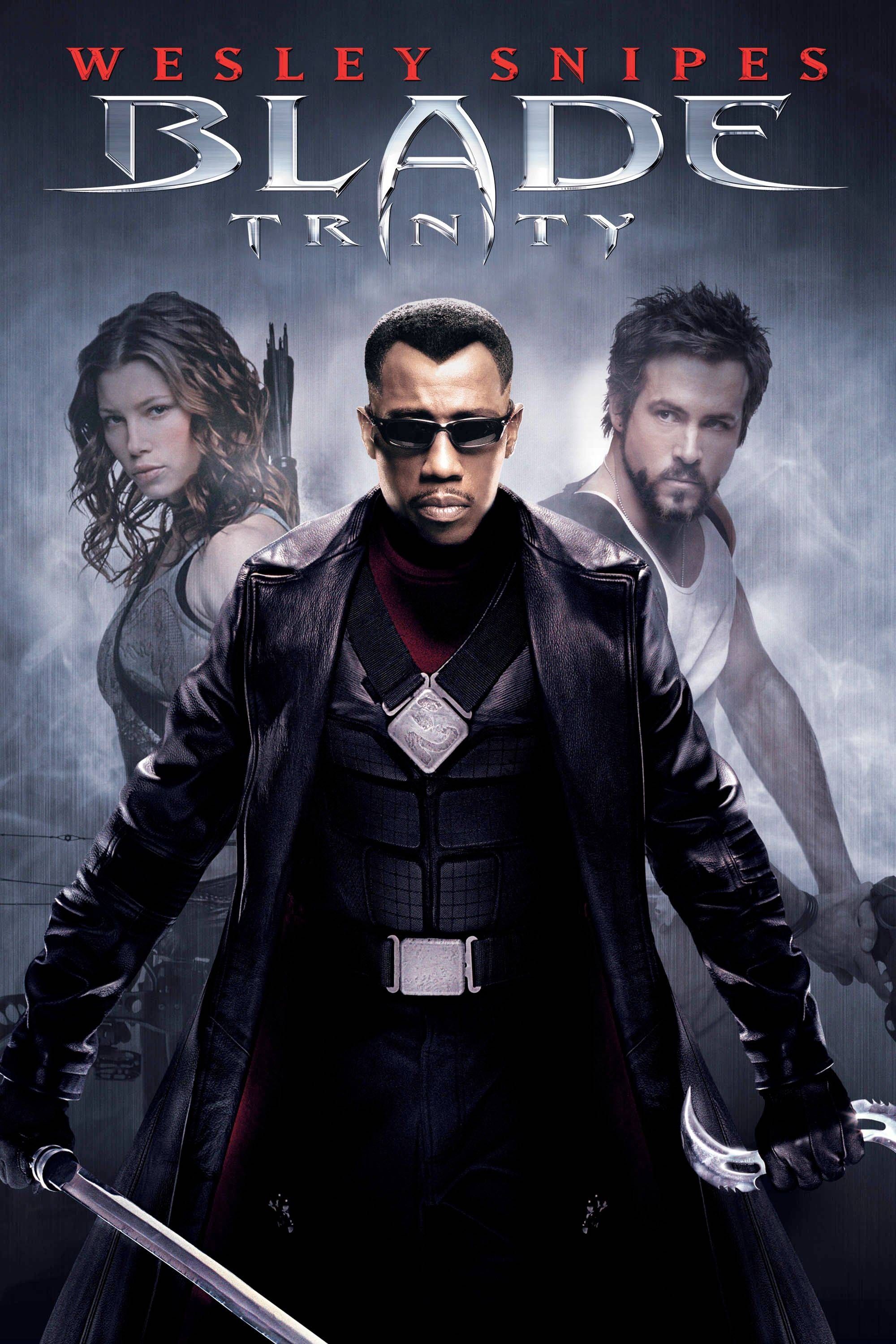 Blade: Trinity In Blade: Trinity, Wesley Snipes' Daywalker returns one final time to fight Dracula himself. This time, Eric Brooks is accompanied by his friend Whistler's daughter Abigail (Jessica Biel) and the former vampire Hannibal King (Ryan Reynolds), who work together as the vampire-hunting team "The Daystalkers" to stop Danica Talos (Parker Posey) and end the war between humans and vampires once and for all.
Blade: Trinity In Blade: Trinity, Wesley Snipes' Daywalker returns one final time to fight Dracula himself. This time, Eric Brooks is accompanied by his friend Whistler's daughter Abigail (Jessica Biel) and the former vampire Hannibal King (Ryan Reynolds), who work together as the vampire-hunting team "The Daystalkers" to stop Danica Talos (Parker Posey) and end the war between humans and vampires once and for all.Release Date December 8, 2004 Director David S. Goyer Cast Wesley Snipes , Kris Kristofferson , Dominic Purcell , Jessica Biel , Ryan Reynolds , Parker Posey Runtime 123minutes
[圖擷取自網路,如有疑問請私訊]
|
本篇 |
不想錯過? 請追蹤FB專頁! |
| 喜歡這篇嗎?快分享吧! |
相關文章
tag_marvel








